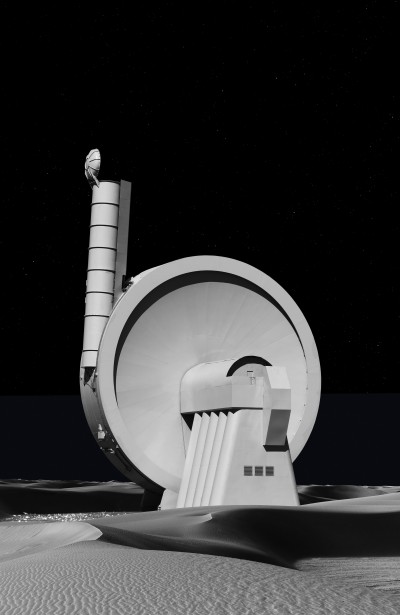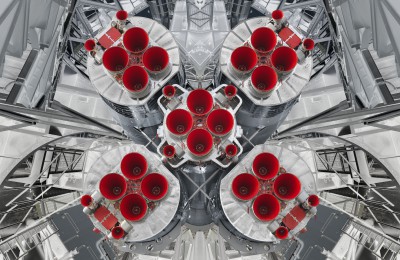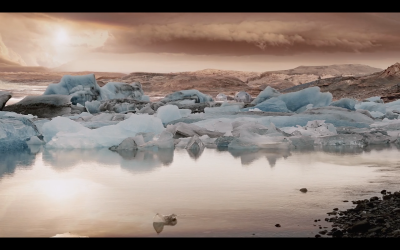*starship
4k video, single channel, stereo, 11:45 min.
In the summer of 2019, a strange-looking vehicle took off from the Starbase spaceport in Texas. The "Starhopper" – a prototype of SpaceX’s next-generation launch system – looked like a welded metal can on three legs and reached a height of 150 m with the new Raptor engine. Just one year later, the Starhopper was transformed into the “Starship”, the largest spacecraft ever built by humans. This spacecraft is being constructed by Elon Musk, whose declared aim is to take humanity to Mars. The new prototype performed high-altitude maneuvers, in particular a controlled horizontal descent, but exploded on landing. Musk paced thoughtfully through the debris on the launchpad. Technology and design continued to evolve, and on three more test flights, the spacecraft exploded while attempting to land upright. Finally, in spring 2021, the first vertical landing was achieved, two years after the initial hop of a small metal can. Two more years later, in spring 2023, the complete 120-meter-tall Starship launch system stood on the launchpad, ready for its first test flight into orbit. After a successful launch, the rocket began to wobble at an altitude of 30 km, with some engines damaged at liftoff. Four minutes after takeoff, the Starship was detonated by its self-destruct systems. The next version of the Mars spacecraft is already in the hangar.
The video work "*starship" shows the development phases of the largest spacecraft ever built by humans, which is intended to eventually take us to Mars and make us a bi-planetary species. In the opening sequence of the video work, we are already at our destination and approaching the Martian surface. This raises the question of when this vision will become reality. When will the first human set foot on Mars? In the subsequent sequences, we observe the Starship as it develops. Launch after launch, it takes off, only to be torn to pieces time and time again. The Icarus tragedy is constantly repeated. In the final sequence, the massive spacecraft majestically ascends into space, climbing higher and higher, only to end as a fireball in the sky. Mars is still a distant goal. In the famous opening sequence in Stanley Kubrick's film "2001: A Space Odyssey," a bone from the Stone Age transforms into a spaceship with a single cut, representing a significant evolutionary leap. The development phases of the Starship can be seen as a historical phase in the evolutionary development of our technologically driven civilization. The Starship surpasses all previous achievements in the history of space exploration in terms of innovation, boldness, and vision. One day, it will take us to Mars.
Sound design by Moritz Weber



















































































































































